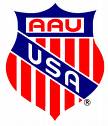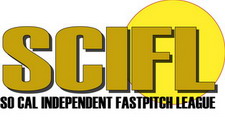
We are pleased to share the second ISC Hall of Fame biography for 2008, this one of Hal Britton.
Hal Britton grew up in the 1930s, his home just a few blocks from Fresno, California’s premier recreational facility: Holmes Playground. As a boy, he practically lived on its baseball fields, playing with and joining the ranks of the city’s best ballplayers. Hal was only 15-16 years old when he played in the adult Baseball Twilight League, catching for both the 1941 and 1942 City Champion teams. He also began his participation in fast pitch softball at the age of 15 as a member of the city’s championship team in the highly competitive Open Division.
A natural athlete, who loved to play and compete, Hal excelled in numerous sports, earning 7 high school varsity letters in baseball, football and basketball. Local sportswriters at the time described him as a football standout, “calling the signals, doing the punting, passing, and most of the running from the fullback spot†and as a “record-setting shooter and star guard†in basketball. It was Hal’s performance on the baseball field, however, that attracted scouts from the professional St. Louis Cardinals and Cincinnati Reds.
Like so many of his generation, Hal’s opportunities were interrupted as well as shaped by World War II, when, at the age of 17, he completed his credits for high school graduation early, leaving an undefeated season before his team’s last baseball game, to join the U.S. Coast Guard in the spring of 1943. Before shipping out to serve sea duty, he was based for six months in Pensacola, Florida where baseball games flourished among the enlisted and officer ranks at nearby Corry Field, including some notable former major league players. Participating during his off-duty hours, Hal caught and remembers being behind the plate when Ted Williams “introduced me to a major league pop-upâ€.
Following his return home to Fresno after the war in April of 1946, Hal received professional baseball contract offers from 4 Major League Baseball clubs but decided to turn down the meager minor league salaries and poor living and travel conditions in favor of pursuing his education at USC in the fall. While home on summer break in 1947, having successfully completed two semesters at USC and anticipating a return there in the fall with plans to become an athletic coach, Hal was nevertheless encouraged to take the exams in application for a position as a police officer with the City of Fresno. He subsequently joined the Police Department that September and was thereafter known as the “Catching Copâ€, working the midnight-to-eight shift and changing his sleeping habits to continue playing softball during the week and semi-pro baseball on the weekends at a highly competitive level. During the years 1946-49, Hal first played for the local Roma Wine 1946 softball team that included several players from the ASA 1944 and 1945 National Champion Hammer Field Bombers team and then on a Kingsburg team from 1947-49. On weekends he played semi-pro baseball with the 1946 and 1947 Atwater Packers and with a Los Banos team from 1948-1950 that won the California state championship in 1948 and earned a second place finish in the national tournament in Wichita, Kansas. Some 12 years later, in 1960, Hal led his Fresno Police baseball team to the state championship and to represent California at the national semi-pro baseball tournament in Wichita.
1950 was a pivotal year for Hal Britton’s softball career as the Hoak Packers team was formed from the Kingsburg team with the addition of individually-selected players from within the league. This marked the beginning of 6 consecutive trips to the national tournament for Hal and 4 national team title victories. In 1950, the Hoak Packers won the N.S.C. National Tournament and, after the creation of the I.S.L. in 1951, Hal’s career included 3 I.S.L. National Tournament team titles with the Hoaks in 1951, 1952, and 1954. After the Hoaks disbanded, in 1955, Hal made it to the finals of the N.S.C. tournament championship with the Hanford Kings.
Individually, Hal Britton was named to 2 N.S.C. All Tournament Teams (1950, 1955) and 3 I.S.L. All tournament Teams (1952-54). And while player statistics were not systematically compiled or recorded by the leagues in those early days, newspaper accounts at the time reported the following: in 1950, Hal had the best defensive record at catcher at the N.S.C. national tournament; from 1950-52, Hal was regarded as the club’s leading hitter; in 1951, his regular season batting average was .301; in 1952 his regular season batting average was .336 and .413 in the national tournament; and in1955, his N.S.C. state tournament batting average was .454.
Hal remembers with fondness and pride that he and his fellow Hoak Packers played during the height of the popularity of fast pitch softball. Their games drew crowds of 5,000 in a town of 55,000, with a local sports columnist chronicling, â€some of the greatest softball in the world is played annually right here in the San Joaquin Valley.†Hal recalls the greatest challenge was to gather the talent that could create and maintain a winning team chemistry while also garnering sponsorships and earning a living outside of softball. That winning Hoak formula worked for five great years and Hal is the first to credit his fellow All-Tournament teammates Al Cotti (HoF 1972), Ed Heizenrader, Ray Meagher, and Bill Horstman with providing winning offense and defense and, especially, the team’s now legendary pitchers Les Haney (HoF 1972) and Leroy Zimmerman (HoF1970) with decisive contributions to the team’s success. In fact, from 1950-1954, Hoak team members filled up to 6 of the 9 spots annually on the National All Tournament Team each year. But Hal Britton was also one of the best of the best. Two sportswriters of the day, respectively, in 1952, noted that “part of the success of the Hoak pitching staff is attributed to the brainy steady catching of Fresno policeman Hal Brittonâ€, “regarded as one of the finest catchers in the business and the club’s leading hitterâ€.
After 1954, many of the Hoaks retired from competition and the team disbanded, so in 1955, Hal joined the Hanford Kings. By then, his reputation was established, extolled as â€a dangerous long ball hitter, a strong arm, and the sharpest brain among catchers.†During that last season, he continued to be “a standout both offensively and defensivelyâ€, a “sparkplug†that helped fire his team to the finals of the 1955 NSC National Tournament.
After 1955, despite his enduring passion for the sport, Hal found it impossible to accommodate the demands of travel to continue playing softball while also fulfilling his duties as a police officer, so he retired from softball competition. He did so, however, with no regrets, for while he did not have a long career in softball, he enjoyed great success. Hal recalls playing every opponent tough, taking nothing for granted, and playing to win on a team that felt like a family, with every man a team player. He especially relishes “having caught some of the best pitchers in the history of the game at a time when there was no organized sport with more participants in America.†It was with comparable commitment that he then devoted himself to career and family, serving 31 years on the Fresno Police force, the last 6 as Chief of Police, and, with his now late wife Rhett, raising 2 daughters.




